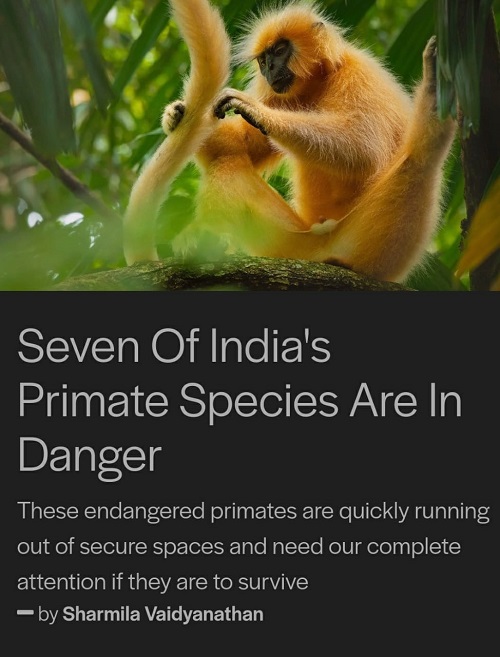These endangered primates are quickly running out of secure spaces and need our complete attention if they are to survive.
As published in Nature inFocus on 10 March, 2021.
For India’s primates, home once meant vast, uninterrupted stretches of evergreen forests with access to native plants and trees for food. The country’s northeast region, a biodiversity hotspot, prides itself in providing the right environment for primates and boasts the highest primate diversity in the country. Sadly, many of them no longer have the freedom of nature’s bounty. Their habitats are fast decreasing, and they are holding onto what is left in hopes of survival. Loss of land and depletion of food sources have limited many of the primate species to fragmented patches. They have had to alter their diets as plantations have taken over their homes and are now exposed to conflict situations as agricultural lands and developmental projects become their next-door neighbours. There are about 15 species of Indian primates of which the Rhesus Macaque and the Gray Langur are widely distributed. While several others face grave threats, it is difficult to comprehend the true nature of their conservation status due to the lack of distribution data.
Through this story, we would like to share the trials and tribulations of some of the endangered primates of our country. Many of the primate species are protected under the Wildlife (Protection) Act of 1971. However, lack of awareness often leads to primates being killed for food, perceived medicinal benefits or in retaliation for crop damage. Beyond secure habitats, our primates need compassion and a better understanding of their threats so that communities can be involved in safeguarding them.
Read the complete story here.
